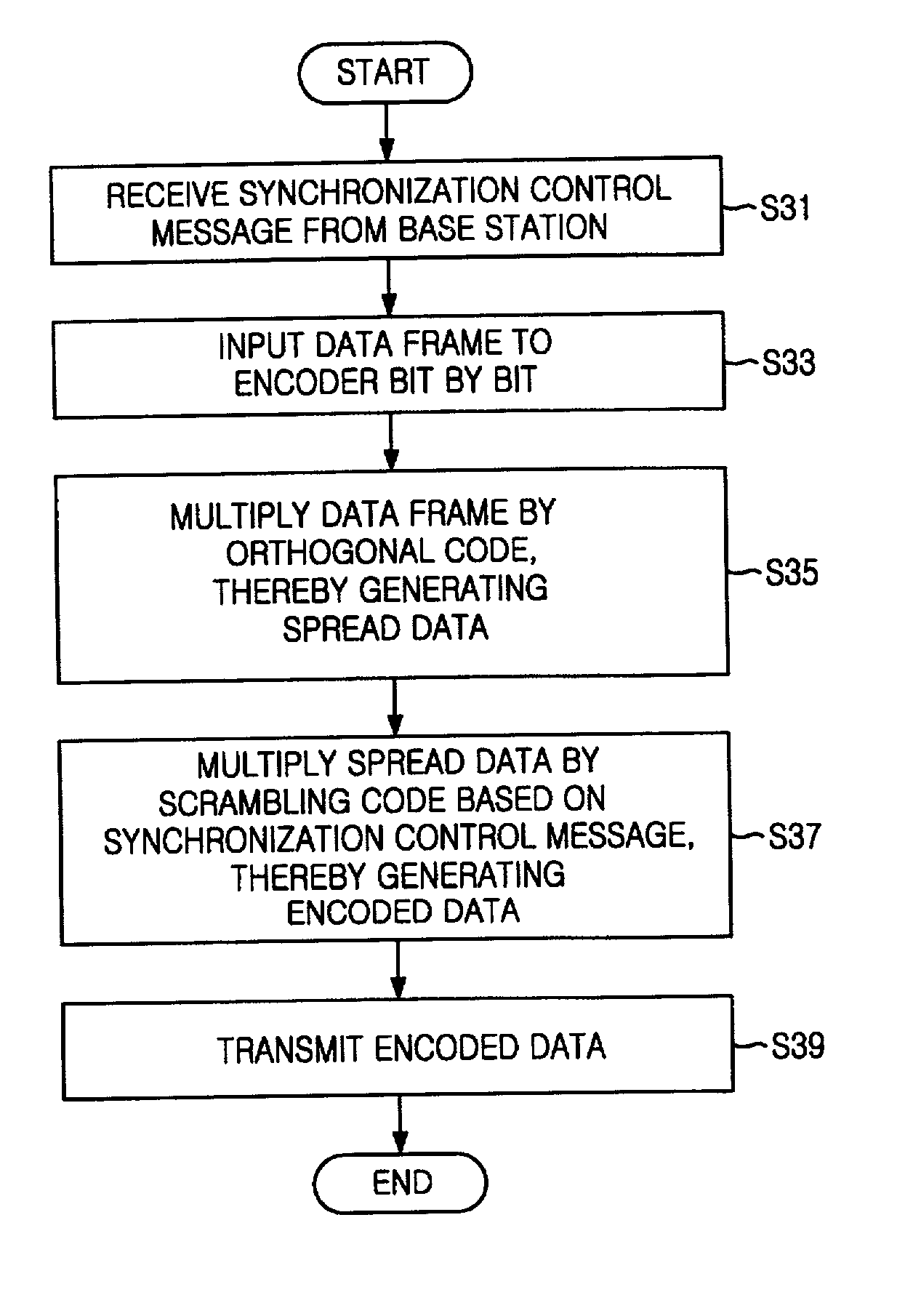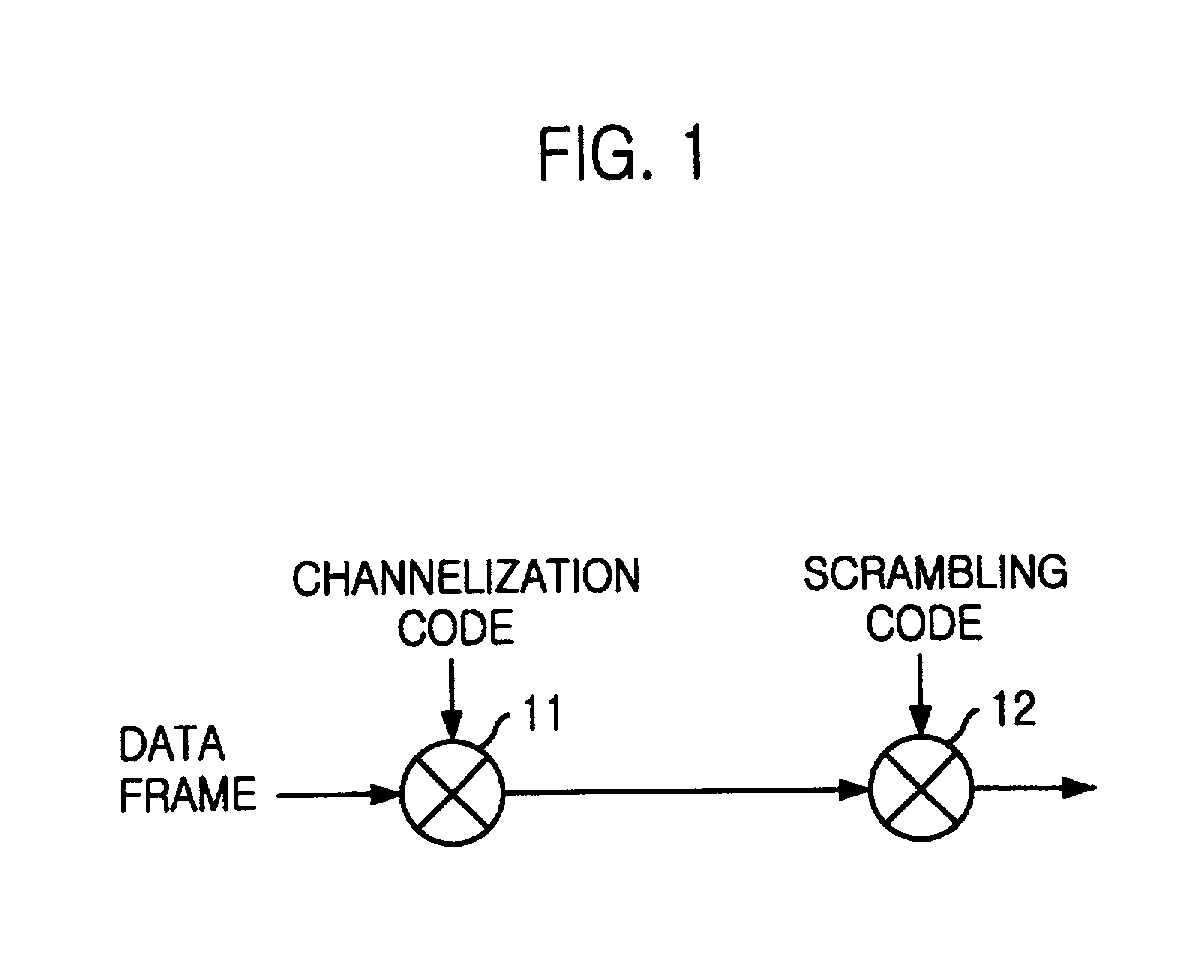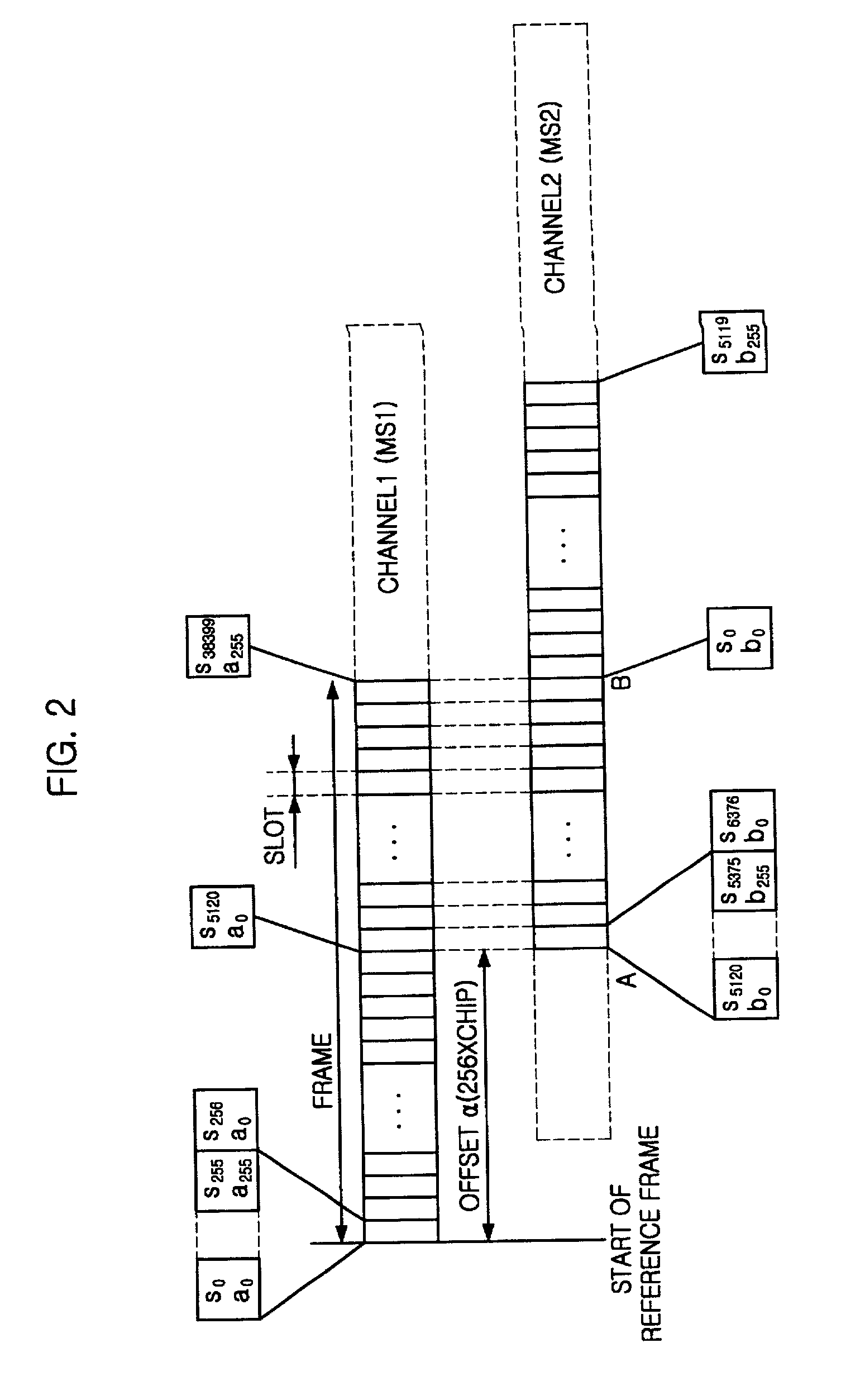Method for assigning codes in uplink of synchronous wireless telecommunication system
a synchronous wireless telecommunication system and code technology, applied in pulse generators, orthogonal multiplexes, pulse techniques, etc., can solve the problems of limited capacity of reverse channels, interference in reverse channels, and inability to synchronize reverse channels
- Summary
- Abstract
- Description
- Claims
- Application Information
AI Technical Summary
Benefits of technology
Problems solved by technology
Method used
Image
Examples
Embodiment Construction
[0015] Uplink synchronous transmission scheme (USTS) technology will be described in more detail.
[0016] When a mobile station located in a coverage (cell) of a base station tries to set up a call through a reverse channel, a node B (base transceiver station) of the base station sets a reference time based on a round trip propagation delay and computes time offset between the reference time and start time of frame of the mobile station trying to set up the call. When the mobile station receives a signal from the base station, also, the base station computes time offset between the reference time and start time of frame of the mobile station. The base station informs the mobile station of the time offset through a control information channel. The mobile station adjusts start time of its frame in a transmission channel to the reference time of the base station.
[0017] Another mobile station adjusts start time of its frame based on the time offset received from the base station. The time...
PUM
 Login to View More
Login to View More Abstract
Description
Claims
Application Information
 Login to View More
Login to View More - R&D
- Intellectual Property
- Life Sciences
- Materials
- Tech Scout
- Unparalleled Data Quality
- Higher Quality Content
- 60% Fewer Hallucinations
Browse by: Latest US Patents, China's latest patents, Technical Efficacy Thesaurus, Application Domain, Technology Topic, Popular Technical Reports.
© 2025 PatSnap. All rights reserved.Legal|Privacy policy|Modern Slavery Act Transparency Statement|Sitemap|About US| Contact US: help@patsnap.com



